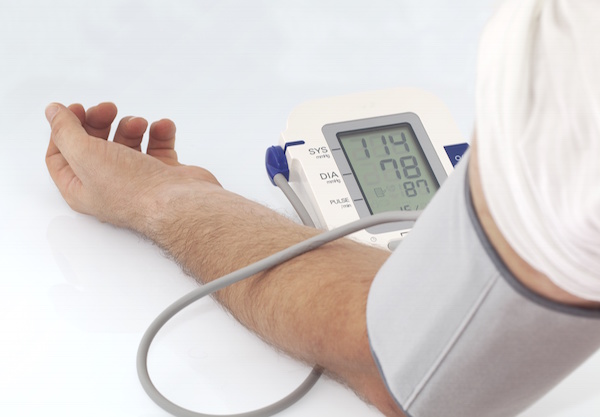
THURSDAY, Feb. 13, 2014 (HealthDay News) — Although most Americans live relatively close to a hospital that can give emergency stroke treatment, few actually receive the recommended therapies, a new study suggests.
People suffering a stroke caused by a blood clot — which most strokes are — can be treated with a medication called tissue plasminogen activator (tPA). As long as the drug is given within three hours of the first stroke symptoms, it can break up the blood clot and help limit brain damage from the stroke.
But in the new study, researchers found that only 4 percent of the more than 370,000 Medicare patients who suffered a stroke in 2011 were treated with tPA.
That was despite the fact that 81 percent of Americans live within an hour’s drive of a hospital that can give the drug, which experts consider the “gold standard” for treating ischemic strokes.
Ischemic strokes, the type caused by a blood clot, account for 87 percent of all strokes, according to the American Stroke Association.
Other research has shown that few Americans get tPA or another treatment for ischemic strokes called endovascular therapy, in which a doctor uses a catheter to remove the blood clot from the blocked brain vessel.
But lead researcher Dr. Opeolu Adeoye said this study adds another layer: Most stroke victims are within reach of the treatment — they’re just not getting it.
“That gives the impression that patients are not getting to the hospital in a timely manner,” said Adeoye, an associate professor of emergency medicine and neurosurgery at the University of Cincinnati.
The reason for gaps in treatment can’t be gleaned from the study. But it’s likely that many stroke victims do not recognize the symptoms right away, said Adeoye, who is scheduled to present his findings Thursday at an American Stroke Association meeting in San Diego.
It’s also possible that some patients initially go to a hospital that can’t provide the right care, Adeoye said. That’s why it’s critical that people know the warning signs of a stroke and call 911 instead of having someone drive them to the ER, he said.
Paramedics should know which local hospitals can treat a stroke, Adeoye said. “And they can also alert the hospital that a potential stroke patient is arriving,” he said.
That way, doctors and nurses can prepare, which saves precious minutes. “With stroke, every 15-minute delay in treatment increases the risk of that patient not being able to go home,” Adeoye said.
Research has linked those extra minutes to both an increased risk of death and a greater chance of disabling effects that land a patient in a stroke rehab center or nursing home.
“Minutes can make a huge difference,” said Dr. Ross Tobleman, medical director of the emergency room at Scott & White Hospital in Round Rock, Texas.
After three hours — or four and a half for certain patients — the risks of tPA outweigh the potential benefits, Tobleman said. Those risks include bleeding in the brain, which can be fatal.
Tobleman said he was not surprised that so few stroke victims receive tPA, since there is such a short time window for the drug to be given — and so many people do not act on initial stroke symptoms.
Those symptoms include a droopiness or numbness on one side of the face; weakness in one arm; sudden difficulty speaking, seeing or walking; and a sudden, severe headache.
Dr. Bruce Ovbiagele, a stroke expert who was not involved in the study, agreed that acting on symptoms right away is key. “Even if you have a stroke center right next door, it doesn’t matter if you don’t get there in time,” said Ovbiagele, a professor of neurosciences at the Medical University of South Carolina, in Charleston.
But it’s not only the general public who could improve. There are some communities where paramedics might not know the best hospital for potential stroke patients, Ovbiagele said.
The new findings are based on Medicare claims data for more than 370,000 Americans who suffered an ischemic stroke in 2011.
Just 4 percent received tPA, while 0.5 percent underwent an endovascular procedure. Based on the researchers’ estimates, 56 percent of Americans live within an hour of a center that performs endovascular procedures — and 85 percent could be transported to one by helicopter within an hour.
It’s not clear, though, how many stroke patients should be getting endovascular therapy, Ovbiagele said. For one, the procedure can be done only when a larger blood vessel is blocked. And although it can dislodge a blood clot, Ovbiagele said, studies have not yet shown that the procedure improves patients’ outlooks.
Because this study was presented at a medical meeting, the data and conclusions should be viewed as preliminary until published in a peer-reviewed journal.
The bottom line for the general public, Tobleman said, is “don’t wait and wonder if you’re having a stroke.”
People often hesitate to call 911 out of worry their symptoms really are nothing, Tobleman said. “Some patients say they didn’t want to bother us,” he said. “Please bother us. It’s our job.”
More information
The American Heart Association and American Stroke Association have more on stroke treatment.
Copyright © 2026 HealthDay. All rights reserved.

